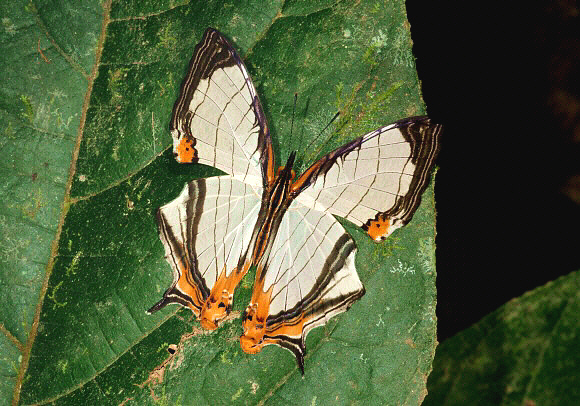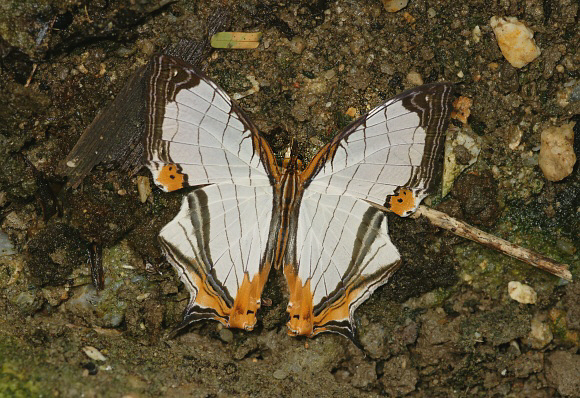
Introduction
The Mapwings, together with their relatives in Chersonesia are medium sized butterflies noted for their attractive patterns of fine lines, and tailed hindwings.
The genus Cyrestis comprises of 25 species, of which 17 occur in the Oriental region. Only 4 occur in West Malaysia – themire, cocles, nivea and maenalis. An additional species theresae occurs on Sumatra and Borneo, while the remainder are found variously from India to Papua New Guinea and the Solomon islands; except for a single species camilla, found in Africa and Madagascar.
Cyrestis nivea occurs in Myanmar, Thailand, West Malaysia, Singapore, Sumatra, Sabah, Sarawak, Brunei, Kalimantan, Palawan, Sulawesi, Java and the Lesser Sunda Islands.
The male and female are similar, although the female is a little paler and has slightly more rounded wings. The butterfly can easily be confused with maenalis, but the fine lines on the wings of the latter are darker and more pronounced.

Habitats
This is the commonest Cyrestis species in Malaysia, and is found in primary and secondary forest at elevations between sea level and about 500 metres. Above that altitude it is gradually replaced by maenalis.
Lifecycle
The upper part of the larva is green, covered with tiny pale tubercules that give it a rough texture. On the 5th and 11th segments there is a long curved spiky horn which is dark purplish brown, this colour extending as a saddle which links to the dark lower part of the body. The head is the same colour, and bears a pair of recurved horns. The foodplants of nivea appear to be unrecorded, but Corbet & Pendlebury state that the foodplants of other Cyrestis species include Streblus ilicifolius and Ficus ( both Moraceae ), and Tetracera sarmentosa ( Dilleniaceae ).
Adult behaviour
The Straight-line Mapwing is usually encountered singly, along narrow forest paths where dappled sunlight filters through the foliage.
Males can also be seen on gravel roads, in quarries, or along pebble-strewn river beaches, where they bask in full sunlight. They are attracted to seepages and other moist spots, and will spend long periods settled with wings fully outspread and flattened against the ground, basking in nooks among rubble or small boulders. Males are also known to visit fungi.
Females are seen less often, but sometimes encountered along forest trails, or nectaring at flowers in forest gardens.
Both sexes habitually rest beneath leaves with their wings outspread. Less commonly they will bask on the upper surface of large leaves, but tend to only do so in areas of dappled sunlight.
